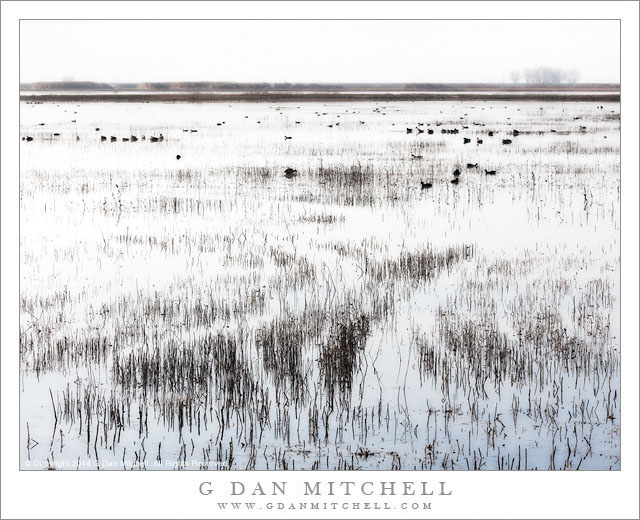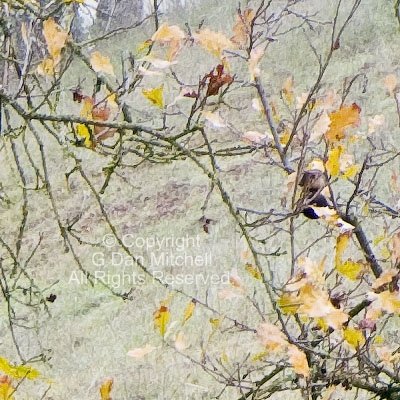
Flooded Field, Winter. San Joaquin Valley, California. January 1, 2014. © Copyright 2014 G Dan Mitchell – all rights reserved.
The stubble of last year’s crop in a flooded San Joaquin Valley winter field
This photograph comes from a season that seems quite remote today, during the warm late-summer days of mid-August. I made the photograph back on New Year’s Day 2014, when a group of us met in the San Joaquin Valley to welcome the dawn (literally — we arrived before sunrise) of the new year by spending a day photographic migratory birds and the flat and moody Central Valley landscape. Looking at photographs like this one now always reminds me of how quick and how regular the annual cycle is, since we are now considerably closer to New Year’s Day 2015 than the first day of 2014.
This photograph could also be a reminder to the stresses to wildlife from a third drought year and the conversion of the overwhelming majority of the important Central Valley wetlands to farm land. On the positive side, this location is an example of how agriculture and wildlife protection can coexist, since it is farmed in the dry season and then flooded for the birds in the winter. And does it ever attract birds! Here the patterns left by farm machinery are visible in the waters of the shallow ponds where birds were floating on this day.
 G Dan Mitchell is a California photographer and visual opportunist whose subjects include the Pacific coast, redwood forests, central California oak/grasslands, the Sierra Nevada, California deserts, urban landscapes, night photography, and more.
G Dan Mitchell is a California photographer and visual opportunist whose subjects include the Pacific coast, redwood forests, central California oak/grasslands, the Sierra Nevada, California deserts, urban landscapes, night photography, and more.
Blog | About | Flickr | Twitter | Facebook | Google+ | 500px.com | LinkedIn | Email
Text, photographs, and other media are © Copyright G Dan Mitchell (or others when indicated) and are not in the public domain and may not be used on websites, blogs, or in other media without advance permission from G Dan Mitchell.

